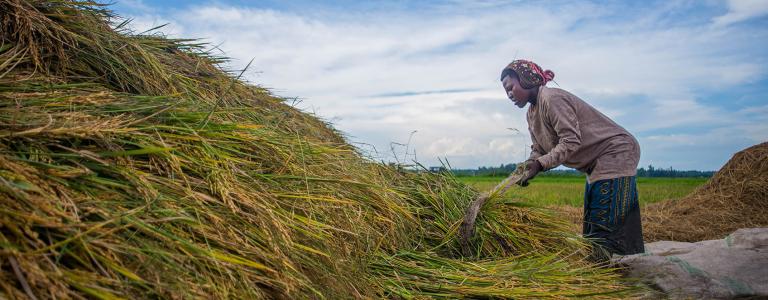Launch of the Responsible Agricultural Investment (RAI) Tool for Agribusiness
This event introduced the new RAI Tool for Agribusiness to potential users and explored opportunities to promote its uptake. The tool aims to support agribusinesses to align their practices, procedures, and operations with principles of responsible investment in agriculture and food systems.
Agribusinesses and investors in the food and agriculture sector are increasingly motivated to ensure their operations and investments generate positive social and environmental outcomes. But they need support to translate these aspirations into responsible business practices and responsible investments.
The RAI Tool for Agribusiness is a reference tool developed by IISD, Cerise+SPTF, and partner organizations with support from the Swiss Agency for Development and Cooperation (SDC). It aims to help agribusinesses assess their compliance with international principles, such as the Committee on World Food Security’s Principles for Responsible Investment in Agriculture and Food Systems (CFS-RAI), the ASEAN Guidelines on Promoting Responsible Investment in Food, Agriculture, and Forestry (ASEAN RAI), and the International Finance Corporation (IFC) Performance Standards.
The RAI Tool for Agribusiness provides a framework that integrates these high-level principles into the language of agribusiness operations, structures, procedures, and management practices. It is primarily meant to help agribusinesses identify and prioritize gaps as a first step to improving their practices. It has been tested by agribusinesses in Africa and Asia and refined based on their input and feedback.
About the Event
Organized by IISD and Cerise+SPTF, this launch event introduced the RAI Tool for Agribusiness to potential users, including financial investors and agribusinesses, international organizations, civil society, think tanks, and development partners.
During the event, speakers from IISD, Cerise+SPTF, and other organizations involved in the creation and testing of the tool discussed
- the development of the tool, its intended use, and related initiatives;
- how to use the tool and its supporting materials; and
- experiences of using the tool in practice.
These speakers were followed by an interactive discussion with participants to explore options and opportunities for promoting uptake of the tool by agribusinesses, industry associations, financial investors, and others.
Upcoming events
Scaling Up Green Public Procurement: Insights from India, Indonesia, and South Africa
A webinar looking at the progress, challenges, and opportunities in scaling up green public procurement in India, Indonesia, and South Africa, exploring strategies to unlock its potential for sustainable development.
Implementing the European Union Deforestation Regulation: Perspectives from Southeast Asia
Webinar will bring together different perspectives to discuss the practical feasibility of EUDR implementation and explore alternative and complementary approaches to address deforestation.
Trade Partners' Retreat
IISD's Trade program is bringing together its funders to review the team's impact, explore strategic opportunities, address challenges, and plan for the future.
